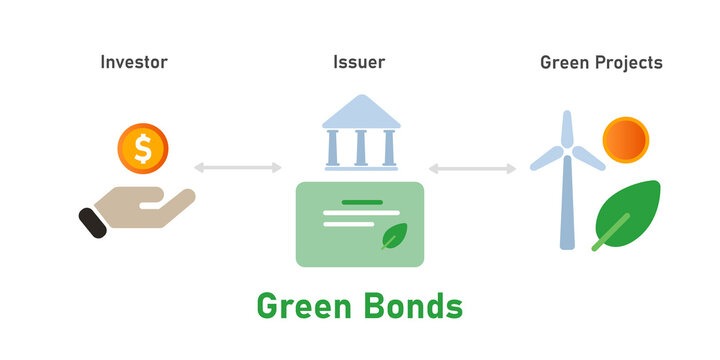Sovereign Green Bonds: An Overview
- Sovereign green bonds are debt securities issued by national governments to raise funds for climate and environmental projects.
- The funds raised through the sale of these bonds are used to finance projects that have a positive impact on the environment, such as renewable energy projects, green infrastructure, and natural resource conservation.
- In India, the government has issued sovereign green bonds to fund projects related to clean energy, including solar and wind power.

Benefits of Sovereign Green Bonds
- Sovereign green bonds provide a way for governments to finance green projects and encourage private sector investment in the green economy.
- They can also help to reduce the cost of financing for green projects by providing a stable source of funding.
- The issuance of sovereign green bonds can also increase transparency and accountability, as the use of the funds is closely monitored to ensure that they are used for the intended purpose.
What Difference Between SGB and Other Bonds?
- Sovereign green bonds (SGrBs) are a type of government bond issued to finance climate and environmental projects.
- SGrBs are similar to other government bonds in that they have a maturity period and carry a coupon rate, but the proceeds from their sale are used specifically for green projects.
- SGrBs are part of the government’s overall borrowing and will add to the government’s debt.
- In India, the government has announced plans to borrow INR 16,000 crore through the issuance of SGrBs in H2 FY23 as part of a larger borrowing plan of INR 5.92 lakh crore through dated securities.
Risks and Challenges
- One of the main risks associated with sovereign green bonds is the possibility of default. While the risk of default is generally low for sovereign bonds, it is important for investors to carefully consider the creditworthiness of the issuing government.
- Another challenge is the lack of standardization and transparency in the market for sovereign green bonds. This can make it difficult for investors to compare the risks and returns of different bonds.
- There is also a risk that the funds raised through the sale of sovereign green bonds may not be used effectively or may not have the intended impact on the environment. It is important for governments to carefully plan and monitor the use of these funds to ensure that they are used effectively.
Conclusion
Sovereign green bonds are an important tool for governments to finance climate and environmental projects and encourage private sector investment in the green economy. While there are risks and challenges to consider, the potential benefits make them an attractive option for investors and governments alike.
FAQs:
What are sovereign green bonds?
Sovereign green bonds are debt securities issued by national governments to raise funds for climate and environmental projects. The proceeds from the sale of these bonds are used to finance projects that have a positive impact on the environment, such as renewable energy projects, green infrastructure, and natural resource conservation.
How are sovereign green bonds different from other bonds?
Sovereign green bonds are similar to other government bonds in that they have a maturity period and carry a coupon rate, but the proceeds from their sale are used specifically for green projects.
Are sovereign green bonds part of a government’s overall debt?
Yes, sovereign green bonds are part of a government’s overall borrowing and will add to the government’s debt.
Have sovereign green bonds been issued in India?
The government has announced plans to borrow INR 16,000 crore through the issuance of SGrBs in H2 FY23 as part of a larger borrowing plan of INR 5.92 lakh crore through dated securities.
What are the benefits of sovereign green bonds?
Sovereign green bonds provide a way for governments to finance green projects and encourage private sector investment in the green economy.
They can also help to reduce the cost of financing for green projects by providing a stable source of funding. The issuance of sovereign green bonds can also increase transparency and accountability, as the use of the funds is closely monitored to ensure that they are used for the intended purpose.
What are the risks and challenges associated with sovereign green bonds?
The main risks associated with sovereign green bonds are the possibility of default and the lack of standardization and transparency in the market.
There is also a risk that the funds raised through the sale of these bonds may not be used effectively or may not have the intended impact on the environment. It is important for governments to carefully plan and monitor the use of these funds to ensure that they are used effectively.





